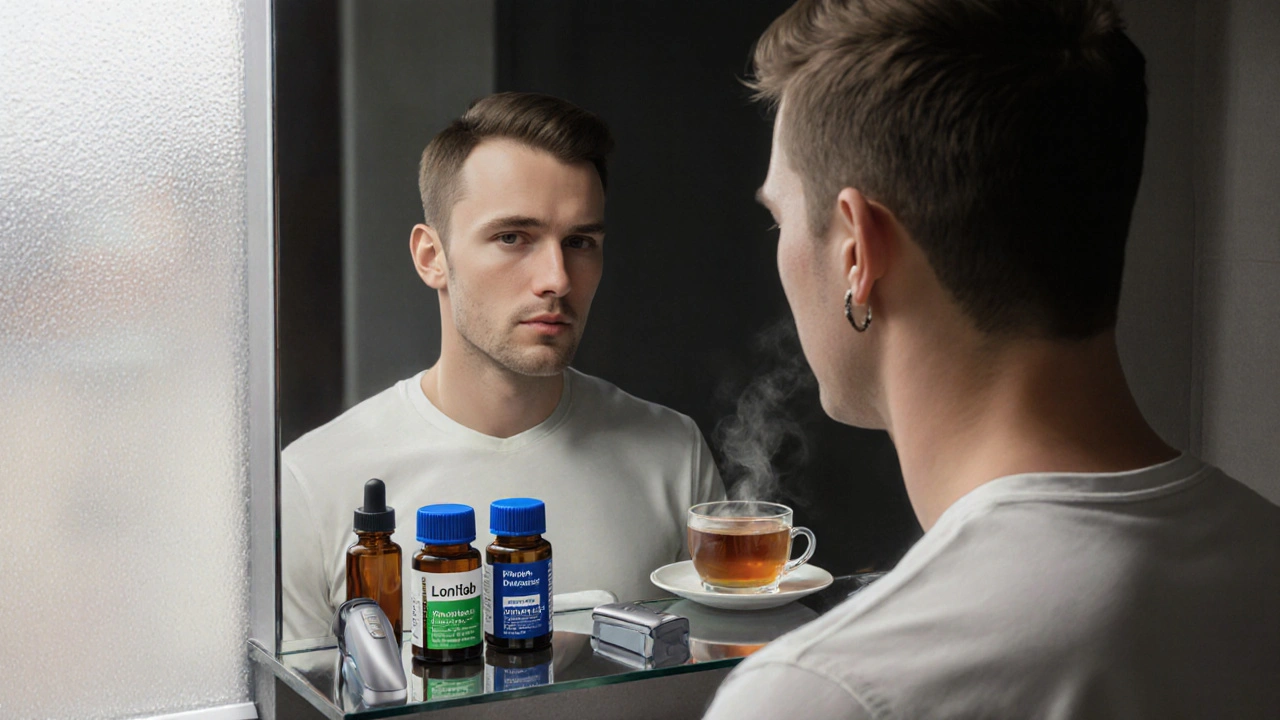Hair Loss Treatment Guide – Simple Steps That Actually Work
Hair today, gone tomorrow? You’re not alone. Millions notice thinning strands before they even realize it. The good news? Most hair loss can be slowed or reversed with the right plan. Below we break down what causes shedding, what you can try at home, and when it’s time to see a professional.
Why Your Hair Is Falling Out
First, understand the basics. Hair grows from follicles, tiny pockets in the scalp. When hormones, stress, or poor nutrition disrupt the cycle, follicles shrink and hair stops growing. Common triggers include:
- Genetics: Family history is a top factor, especially for male‑pattern baldness.
- Hormones: Things like testosterone and thyroid imbalances can shrink follicles.
- Stress: Sudden emotional or physical stress can push many hairs into the shedding phase.
- Nutrition: Lack of iron, vitamin D, or protein weakens hair at the root.
- Medications: Some blood pressure pills and antidepressants list hair loss as a side effect.
Knowing the cause helps you pick the right treatment.
Effective Treatment Options
Not all remedies are created equal. Here are the ones backed by real‑world results.
1. Topical Minoxidil – The over‑the‑counter liquid or foam you apply to the scalp. It widens blood vessels, delivering more oxygen to follicles. Most users see a noticeable slowdown in shedding within a few months and some new growth after six months.
2. Prescription Finasteride – A pill taken once daily that blocks the hormone DHT, a common culprit in male‑pattern baldness. It works best for men, but women may use a lower dose under a doctor’s guidance.
3. Low‑Level Laser Therapy (LLLT) – Handheld devices or caps that emit red light. The light stimulates cellular activity in the follicle, encouraging growth. Studies show modest gains after 12‑week use.
4. Nutrient Boost – Make sure you get enough iron, zinc, biotin, and vitamin D. A simple blood test can reveal gaps. Adding a multivitamin or specific hair‑support supplements can fill those gaps.
5. Natural Topical Mixes – Some people find success with rosemary oil, pumpkin seed oil, or caffeine‑based shampoos. They aren’t miracle cures, but they can complement medical options.
6. Lifestyle Changes – Reduce stress with short daily walks, meditation, or yoga. Aim for 7‑8 hours of sleep; sleep is when the body repairs hair follicles.
Remember, consistency is key. Most treatments need at least three months before you see change, and you’ll need to keep using them to maintain results.
If you’ve tried the basics and still see rapid thinning, it’s time to book a dermatologist or trichologist. They can run scalp biopsies, hormone panels, and offer advanced options like platelet‑rich plasma (PRP) injections or hair‑transplant surgery.
Bottom line: hair loss isn’t a sentence. With a clear understanding of why it’s happening and a plan that mixes proven medicines, good nutrition, and stress control, you can keep your hair looking fuller for years to come.
Lonitab vs Other Minoxidil Alternatives: Detailed Comparison
A thorough side‑by‑side review of Lonitab versus finasteride, dutasteride, PRP, laser therapy, and rosemary oil, covering how they work, costs, side‑effects, and who should use each.
